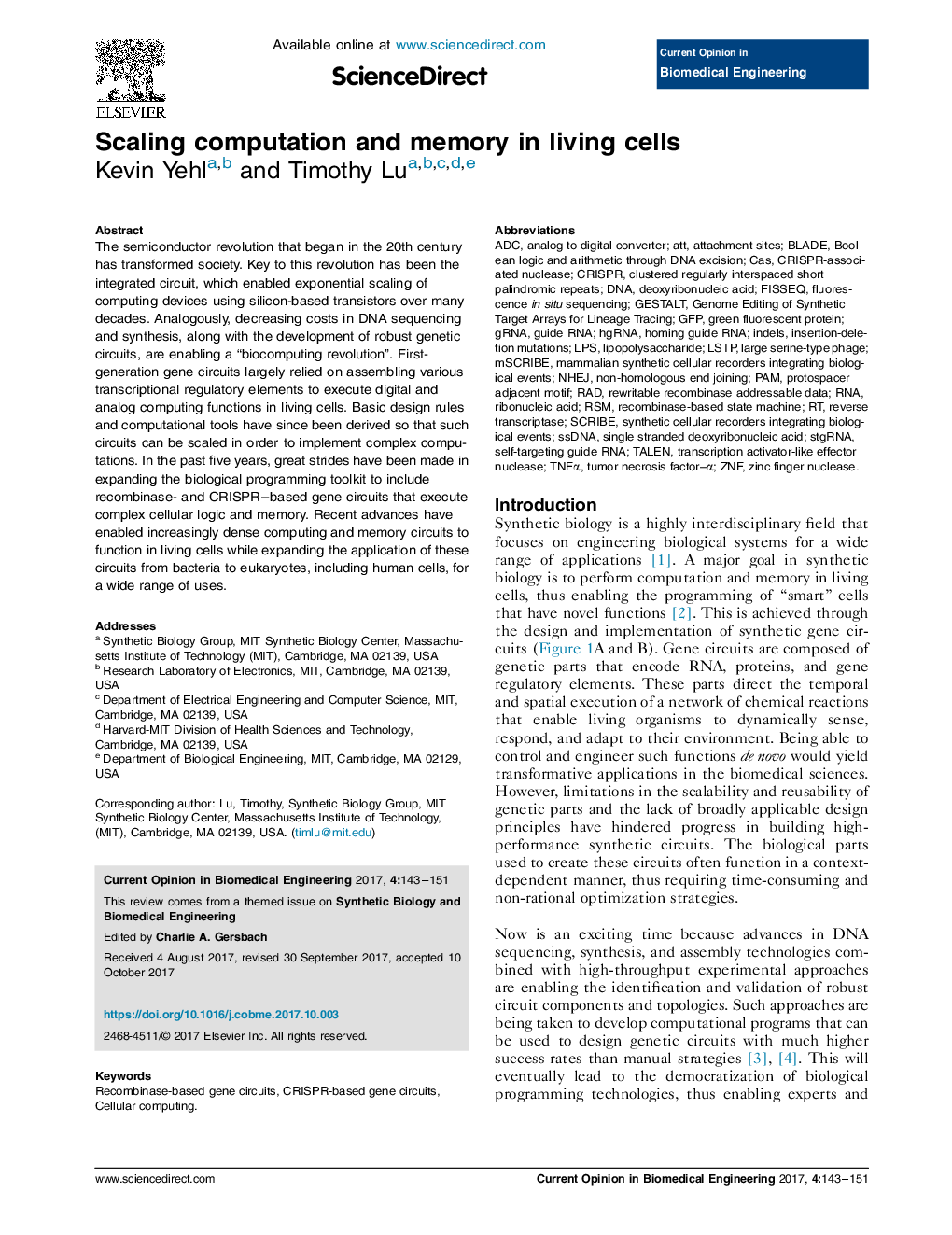| Article ID | Journal | Published Year | Pages | File Type |
|---|---|---|---|---|
| 8919007 | Current Opinion in Biomedical Engineering | 2017 | 9 Pages |
Abstract
The semiconductor revolution that began in the 20th century has transformed society. Key to this revolution has been the integrated circuit, which enabled exponential scaling of computing devices using silicon-based transistors over many decades. Analogously, decreasing costs in DNA sequencing and synthesis, along with the development of robust genetic circuits, are enabling a “biocomputing revolution”. First-generation gene circuits largely relied on assembling various transcriptional regulatory elements to execute digital and analog computing functions in living cells. Basic design rules and computational tools have since been derived so that such circuits can be scaled in order to implement complex computations. In the past five years, great strides have been made in expanding the biological programming toolkit to include recombinase- and CRISPR-based gene circuits that execute complex cellular logic and memory. Recent advances have enabled increasingly dense computing and memory circuits to function in living cells while expanding the application of these circuits from bacteria to eukaryotes, including human cells, for a wide range of uses.
Keywords
TNFαBLADEZNFssDNARADCASNHEJPAMgRNALPSADCCRISPRGFPDNAdeoxyribonucleic acidRNAribonucleic acidATTclustered regularly interspaced short palindromic repeatsReverse transcriptaseguide RNARSMTranscription activator-like effector nucleaseTALENAttachment sitesnon-homologous end joininglipopolysaccharideanalog-to-digital converterprotospacer adjacent motifzinc finger nucleaseIndelsgreen fluorescent proteinGestalt
Related Topics
Physical Sciences and Engineering
Engineering
Biomedical Engineering
Authors
Kevin Yehl, Timothy Lu,
